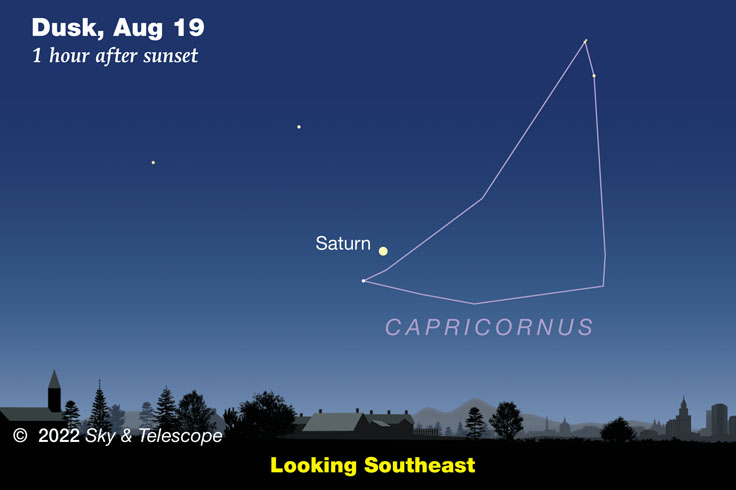August marks the return of the Perseid meteor shower — and as you’re looking out for shooting stars while listening to this month’s Sky Tour podcast, look for Saturn low in the southeast as soon as night begins to fall.

Listen Here:
Podcast: Play in new window | Download
Subscribe: Apple Podcasts | Google Podcasts | Spotify | Email | RSS | More
This month’s Sky Tour astronomy podcast tells you “what’s up” in the evening skies of August. No experience or equipment is necessary — just download or stream the audio file and take it with you outside.
August’s perennial celestial highlight is the Perseid meteor shower, one of the two best displays of “shooting stars” all year. These meteors are caused when little bits of dust shed by Comet Swift-Tuttle slam into our atmosphere at 37 miles per second. Every August, we cross the comet’s orbit and plow right through this dusty debris. You don’t need any special equipment to enjoy the Perseids, and so this annual sky show makes a wonderful activity for your whole family. The Sky Tour podcast offers great tips for when and where to see the shower’s peak activity.

Sky & Telescope / Dennis di Cicco
While you’re waiting for that perfect Perseid to flash across the sky, take a close look at the Moon. To its upper right, by about the width of your clenched fist held at arm’s length, is the planet Saturn. This month Saturn ends its long run in the predawn sky and officially becomes an evening-sky inhabitant.
On the 14th, it reaches opposition, meaning that it’s opposite the Sun in the sky. So just as the Sun sets, Saturn is rising over the southeastern horizon. In the middle of the night, Saturn is its highest in the sky, and as dawn approaches it sinks from view in the west.

Sky & Telescope
Saturn is sitting in notoriously faint Capricornus, a constellation that is usually portrayed as a mythical beast that’s got the head of a goat and the tail end of a fish. But you won’t see anything like that in the sky, no matter how vivid your imagination! Instead, look for a broad triangular pattern kind of like the shape of a fat little rowboat.
Not long after Saturn rises, it’ll be joined at lower left by another planet. Want to know which one? You’ll have to listen to this month’s Sky Tour podcast to find out!
In fact, you can learn lots about what’s currently showing in the night sky from this month’s 13-minute-long podcast. It’s designed to heighten your enjoyment of all the bright stars and constellations now overhead — and no experience or equipment is needed! All you need is a little curiosity, a clear sky, and this month’s Sky Tour episode.
 2
2
Comments
JJ
August 2, 2022 at 3:21 pm
Super as always! What is the music you use in this show every month? Thnx!
You must be logged in to post a comment.
J. Kelly BeattyPost Author
August 5, 2022 at 2:07 pm
hi, JJ. thanks for the kind words. honestly I have no idea about the music. it was provided by an audio service. but it's definitely nice stuff!
You must be logged in to post a comment.
You must be logged in to post a comment.